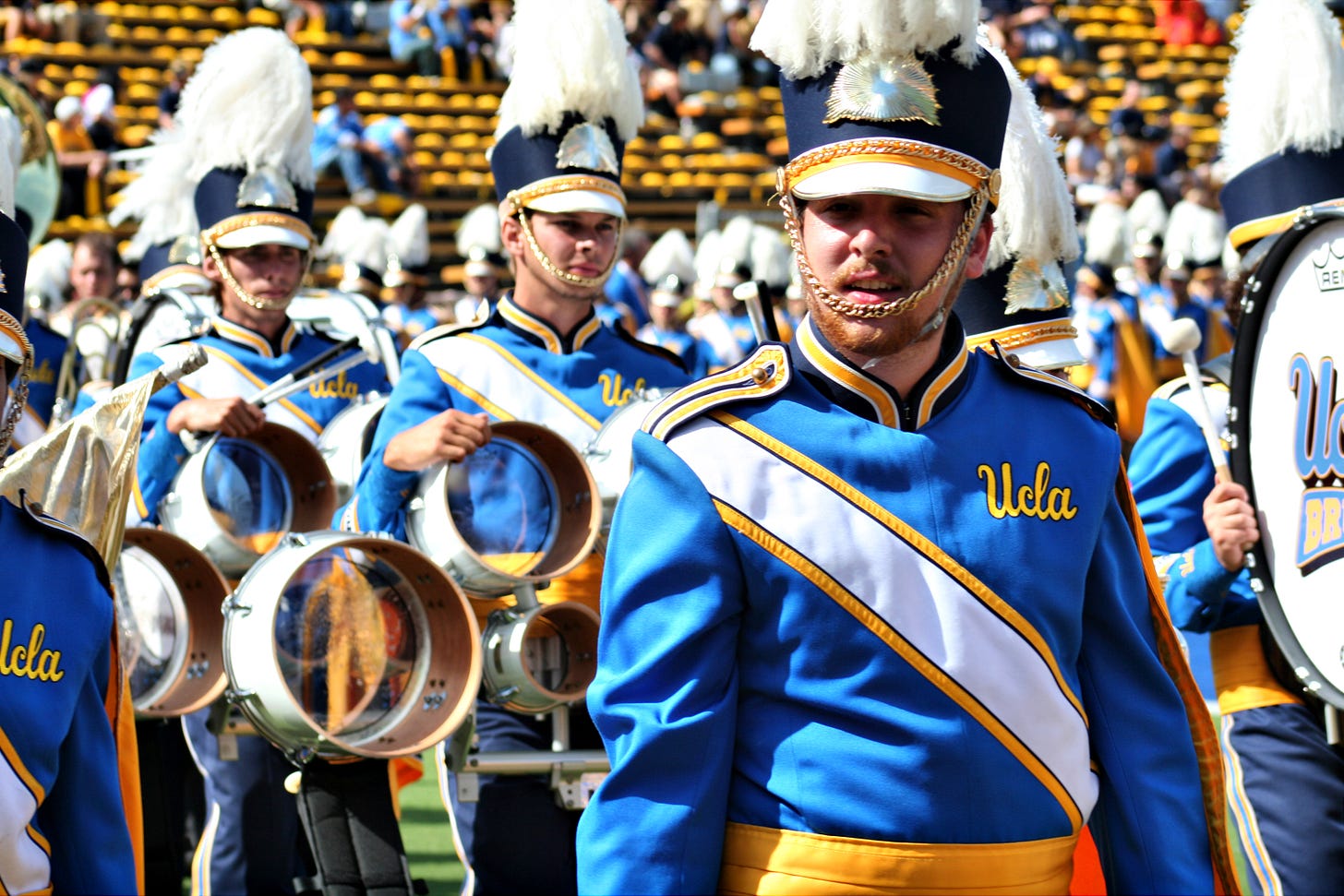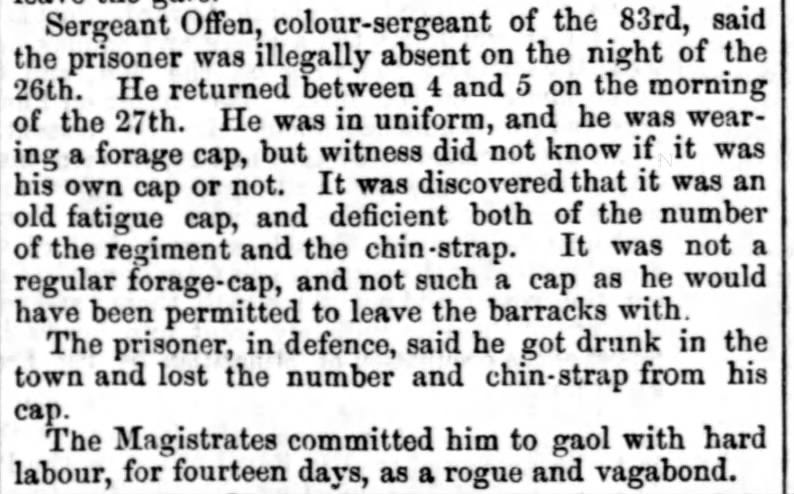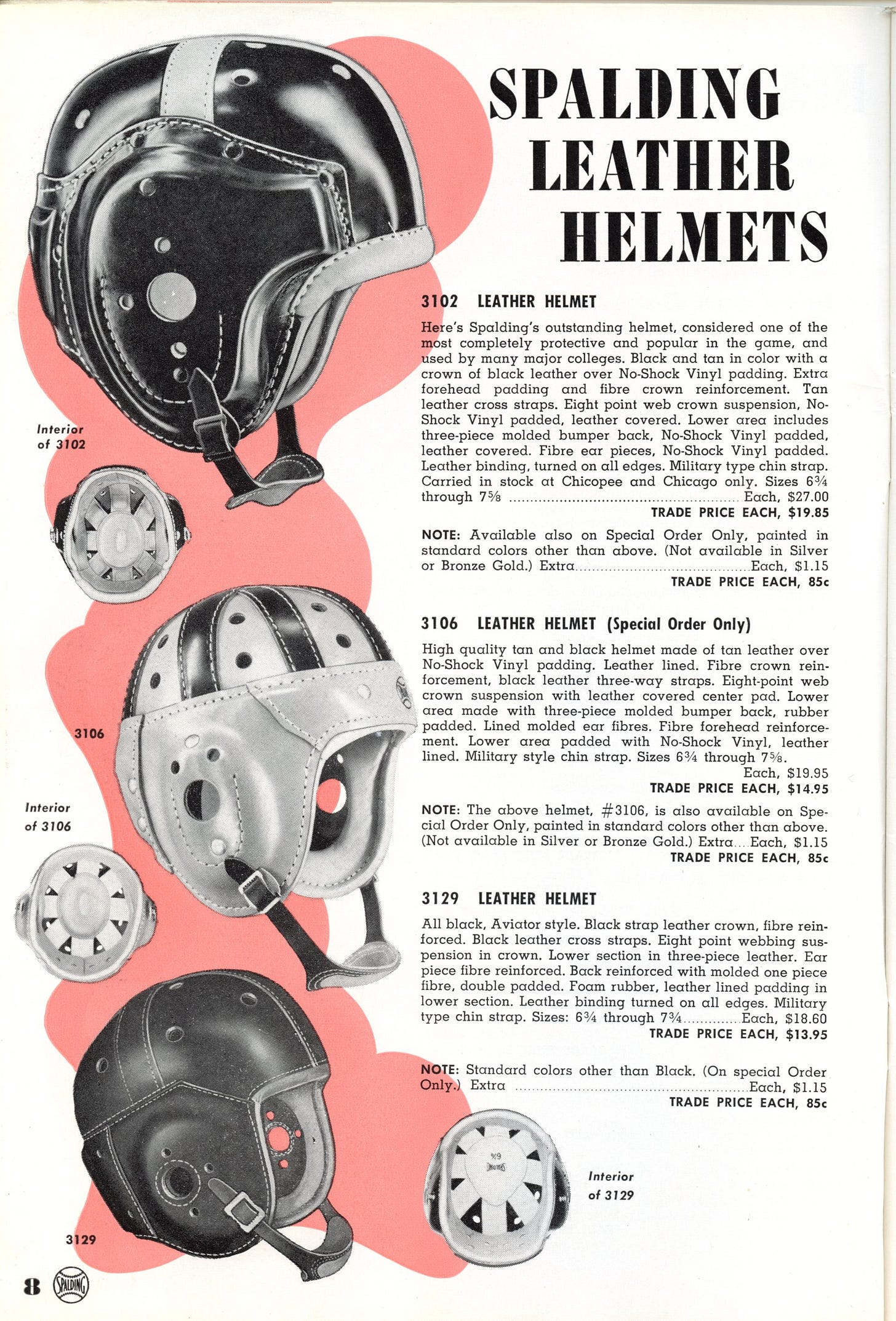Today's Tidbit... Of Jaw and Chin Straps
Nowadays, the chin straps on football helmets cover the wearer's chin, but that was not so in the past. Football chin straps didn't cover the chin until Riddell introduced them with their plastic helmets in 1940. Before then, straps that went under the jaw, resting near the neck, so why in tarnation did they call them chin straps?
As best as I can tell, we adopted the chin strap term from military caps and hats with straps that went under the jaw, though they were commonly worn on or above the chin, especially in ceremonial settings. We still see this use in military settings and in the marching band uniforms that copied the military’s shako-style headgear.

Just as football players are penalized today for not keeping their chin straps properly snapped, a disorderly or missing chin strap was once a gaolable offense, though being drunk and AWOL didn't help either.
But back to football...
The soft canvas and leather helmets that arrived around 1900 had jaw straps comprised of strings that tied or straps that cinched the head harness in place.
The cinched jaw strap remained the norm throughout the leather helmet era, though the catalog pages below show a pad on the strap for the Model No. ZHN (with the nose guard) and strings for the bargain basement Model No. 2.
As mentioned earlier, what we now consider a chin strap for a football helmet premiered with Riddell football helmets in 1940. Riddell then licensed their chin strap design for the 22 million M1 helmets produced during WWII and included them with the plastic football helmets adapted for paratrooper training.

After the war, similar chin strap designs became the norm for all plastic helmets, while leather helmets stuck with the jaw strap design before converting to the on-chin approach a few years down the road.
While plastic helmets dramatically reduced the number of skull fractures, they created other injury problems. Part of the problem stemmed from players using their well-protected heads to spear or otherwise tackle inappropriately, but injuries also resulted from the combination of helmet and chin strap designs.
For several decades, the back of the helmet extended further down the back of the head. Those helmets caused problems for players who wore loose-fitting helmets, particularly with two-point chin straps, since the helmet rotated too easily. When pushed back, it produced a guillotining effect on the neck, and when pushed down the face, the bridge of the nose suffered. Modifying the helmet design and adding pads at the back and nose bumpers on the front reduce the problem, as did the move to four-point chin straps.
The combination of changes proved effective and by 1975, the NCAA recommended that players wear four-point chin straps before transitioning to the four-pointers being mandatory in 1976.
Six-point chin straps also made it to the market, but other helmet technology advances and the move to custom-fitting helmets appear to have made those unnecessary.
IClick here for options on how to support this site beyond a free subscription.









Great point to prove on what are they called chinstraps. I guess I never thought about it in reference to the old leather helmets.